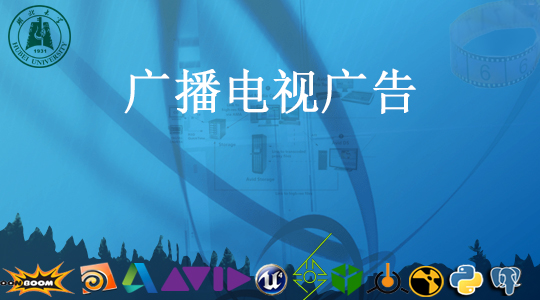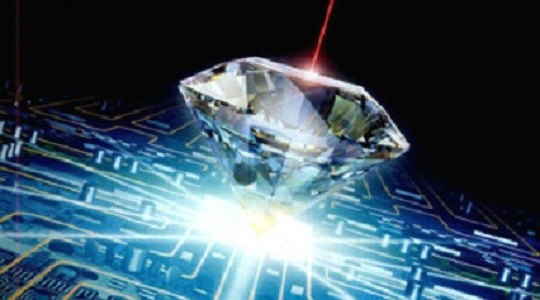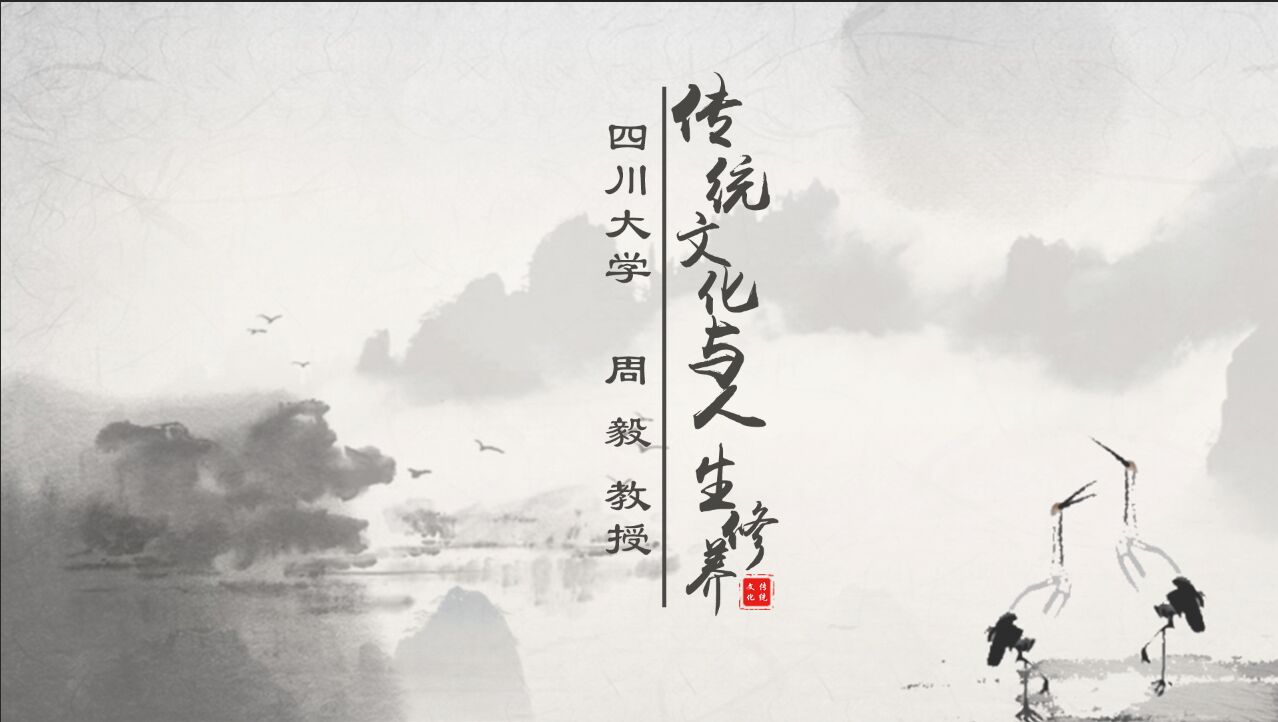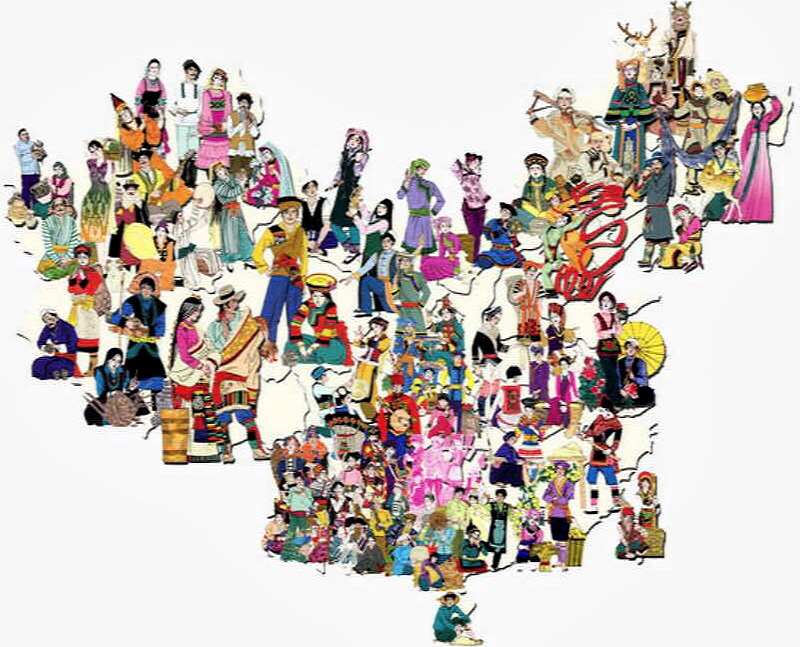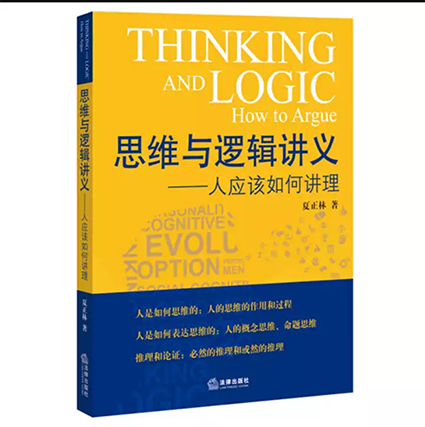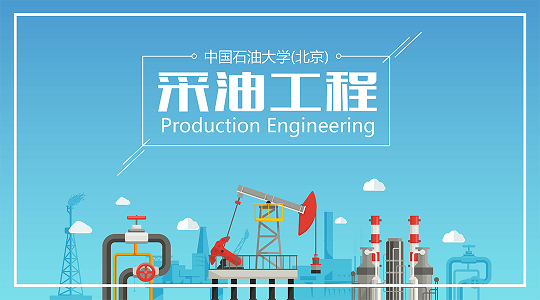
当前课程知识点:新媒体英语 > Unit 4 玩乐新感觉 > CG动画 5 Explanation of the Text > 5 Explanation of the Text
6-上课版Digital Heros 6-Explanation of the Text.docx---点此下载文件
建议用电脑下载附件使用~
查看单词注释的方法:
1、鼠标放在红色单词的上标处,显示尾注内容。
2、双击上标,光标跳至尾注。在尾注处,双击尾注序号,跳至文档序号处。
Digital heroes and computer-generated worlds
数字英雄和计算机生成的世界
Joe Letteri, Oscar-winning co-creator of Gollum on screen, looks at the evolution[i] of computer animation as the next instalment[ii] of The Hobbit trilogy[iii] reaches cinemas. From the beginning, computer animation has had the ability to engage[iv] viewers by giving artists a way to mix[v] reality with fantasy. Early film examples 【such as the stained-glass[vi] knight[vii] in Barry Levinson’s 1986 Young Sherlock Holmes and the ‘water tentacle[viii]’ in James Cameron’s 1989 The Abyss 】offered a glimpse[ix] of the potential of this new art form to create memorable characters. That became immediately apparent in Cameron’s later Terminator 2 (1991). He took an already great idea for a character (a terminator robot) and turned it in a new and unexpected direction: the shape-shifting T-1000 liquid-metal terminator. Computer animation is a natural extension of hand-drawn methods developed during the early-twentieth-century golden age of ‘cel’ animation[x] ushered[xi] in by Walt Disney, in which a series of images is played back at speed to give the illusion[xii] of life. Just as we do today, animators used a variety[xiii] of reference techniques to capture[xiv] the essence of organic movement. Snow White’s dance with the dwarves in Disney’s 1937 film was created by matching the movements of a live, filmed dancer, using a technique called roto- scoping[xv] — in the most basic terms, tracing the motion from a film one frame[xvi] at a time. This technique, although now slightly more sophisticated[xvii] in its application, is still in use. Take dinosaurs, for example. I was fortunate to begin my career at the US visual-effects company Industrial Light & Magic, then in Marin County, California, as it was gearing up[xviii] to create the computer-generated dinosaurs for Steven Spielberg’s 1993 Jurassic Park. Naturally, we all thought that roto-scoping dinosaurs would be a great idea, but unfortunately that was out of the question[xix]. Instead, we studied elephants to understand weight, and lizards, other reptiles and birds to get some ideas about how dinosaurs of different sizes might have moved. Digital animators did motion studies, copying the movement of these animals frame by frame until they could synthesize a convincing idea of dinosaur movement. Two years later, computer animation took another big step forward with the astounding[xx] success of Pixar’s Toy Story. Software was becoming sophisticated enough to tackle the creation of a character’s performance. In traditional animation, a lead animator sets key frames or poses for a character and junior animators draw the ‘in-betweens’ from pose to pose. Now, artists could use the computer to do that. Pixar proved that three-dimensional computer animation could be used to create an entire film. In 2001, I joined Wellington-based visual-effects company Weta Digital to work with Peter Jackson on The Lord of the Rings trilogy, inspired[xxi] in large part by the chance to create the character Gollum. With Gollum, we used the then relatively new technique of performance capture — effectively, an extension of rotoscoping. But instead of looking at an actor from a single point of view and matching the form of the motion, we looked at his performance using dozens of cameras simultaneously and matched the motion’s underlying[xxii] dynamics. Andy Serkis, who performed Gollum, wore a special suit with reflective markers to show the key positions of his joints. From the multiple cameras, we could calculate his skeleton’s position at every frame as he performed. The problem with trying to capture facial motion is that there are no joints, apart from the jaw, that have movements you can track. So for Jackson’s 2005 King Kong, Weta came up with a different technique. Again with Serkis, we glued small reflective markers all over his face. By using these to track the changes in skin position and tension as Andy performed, we could compute what his muscles were doing underneath[xxiii]. Then we built Kong so that he had the same facial-muscle layout as Andy, and used Andy’s muscle movements to drive Kong’s facial performance. This breakthrough meant that we could now capture an actor’s performance in its entirety[xxiv]. This became important for Weta’s next film, James Cameron’s Avatar (2009), for which we made one important modification[xxv]. Each actor wore a helmet that filmed their facial movements; we then extracted[xxvi] the performance data from each frame and used a ‘facial action coding system’ solver to translate the movements into muscle activations[xxvii]. The knowledge of which muscles are activated in a facial expression informed our activation of the corresponding muscles in the digital characters. In addition, this process allowed the director to see the actors live through a virtual[xxviii] camera as they were instantly transformed into their Na’vi characters moving through the world of Pandora. Digital characters also have to appear realistic in their surroundings, whether that is a photographed environment or a complete digital creation such as the jungles of Pandora. So we looked to understand how light and materials interact in nature. One of the best examples of this interaction is subsurface scattering[xxix]. We first developed a technique to replicate[xxx] this mechanism of light transport to create the translucency[xxxi] of Gollum’s skin, leveraging[xxxii] pioneering research by computer-graphics specialist[xxxiii] Henrik Wann Jensen and his colleagues at Stanford University in California. Realistic animation also depends on knowledge of how skin, muscles and hair move independently of a character’s performance. These secondary motions are achieved through intensive simulations[xxxiv] that compute all of the mass[xxxv], dynamics[xxxvi], tensions[xxxvii] and interaction of each part of the body as a character moves. The simulations help to create the complex visual cues that the human brain processes when taking in an image. They also ensure[xxxviii] that the physiology of creatures (real or fantastical) has a ground truth and is believable. Combining this new level of detail with motion-captured performances of talented actors has enabled computer-animated characters to become lead actors. The following year saw all of these developments come full circle[xxxix] when we were able to once again present Gollum in Peter Jackson’s The Hobbit: An Unexpected Journey. This new Gollum benefited from a much more detailed digital model, new subsurface scattering techniques, and all of the advances we have made in the past ten years. If you watch closely, you will see the muscles moving under his skin and the light refracting[xl] in his eyes. And you will get a glimpse of the worlds we can create from the mix of all this art and science.
| 奥斯卡获奖影片《屏幕上的咕噜》(Gollum on screen)的创作者之一乔·莱特里(Joe Letteri)在《霍比特人》(Hobbit)三部曲的下一部上映之际,展望了电脑动画的发展。
从一开始,电脑动画就能让艺术家们将现实与幻想结合起来,从而吸引观众。早期的电影就有这样的例子,如1986年巴里·莱文森(Barry Levinson)拍摄《年轻的夏洛克·福尔摩斯》(Young Sherlock Holmes)中的彩色玻璃骑士,以及詹姆斯·卡梅隆(James Cameron) 1989年拍摄的《深渊》(the Abyss)中的“水触须”, 这些使我们得以一窥这种新艺术形式创造令人难忘角色的潜力。这一点在卡梅隆后来的《终结者2》(1991)中表现得很明显。他为角色(终结者机器人)想出了一个已经很不错的主意,并把它转向一个全新的、意想不到的方向:可以变形的T-1000液态金属终结者。
电脑动画是手绘方法的自然延伸,这些方法在二十世纪早期由迪斯尼引领的“单帧”动画的黄金时代发展起来,即一系列的图像被快速回放,给人以真实景象的幻觉。正如我们今天所做的,动画师使用了各种各样的引用技术来捕捉有机运动的本质。迪斯尼1937年的电影《白雪公主与小矮人》中,白雪公主与小矮人的舞蹈动作是通过匹配一个现场拍摄的舞者的动作而创造出来的,使用了一种旋转照相术的技术——用最基本的术语来说,就是在一帧一帧地追踪电影中的动作。这种技术虽然目前在应用上稍微复杂一些,但仍然在使用中。
以恐龙为例。我很幸运能够在美国视觉特效公司Industrial Light & Magic(位于加利福尼亚州马林县)开始我的职业生涯,当时这家公司正准备为史蒂文•斯皮尔伯格(Steven Spielberg) 1993年的《侏罗纪公园》(Jurassic Park)制作电脑制作的恐龙。当然,我们都认为旋转拍摄恐龙是一个好主意,但遗憾的是,这是不可能的。相反,我们通过研究大象来了解体重,通过研究蜥蜴、其他爬行动物和鸟类来了解不同体型的恐龙是如何移动的。数字动画师做运动研究,一帧一帧地复制这些动物的运动,直到他们能够合成一个令人信服的恐龙运动的想法。
两年后,电脑动画又向前迈进了一大步,皮克斯的《玩具总动员》取得了惊人的成功。软件变得足够复杂可以处理角色的表现。在传统动画中,首席动画师为角色设置关键帧或摆姿势,初级动画师则绘制从一个姿势到另一个姿势 的“中间部分”。现在,艺术家们可以用电脑来做到这一点。皮克斯证明了三维电脑动画可以用来制作整部电影。
2001年,我加入了总部位于韦林顿的视觉特效公司Weta Digital,与彼得·杰克逊(Peter Jackson)合作拍摄《指环王》(Lord of The Rings)三部曲,很大程度上是因为有机会创造出咕噜(Gollum)这个角色。对于咕噜,我们使用了当时相对较新的表演捕捉技术——有效地扩展了旋转照相术。但是,我们不是从单一的角度看一个演员,并匹配其动作形式,而是同时使用几十个摄像机观察他的表演,并匹配动作的潜在动态表现。
扮演咕噜的安迪·瑟金斯(Andy Serkis)穿着一套带有反光标记的特殊服装,以显示他关节的关键位置。从多个摄像头中,我们可以计算出他表演时,他每一帧的骨骼位置。
试图捕捉面部动作的问题在于,除了下巴,没有任何关节有你可以追踪的动作。因此,在杰克逊2005年的《金刚》中,维塔采用了一种不同的手法。我们又用了瑟金斯,在他脸上粘了一些小的反光标记。通过使用这些东西来跟踪安迪表演时皮肤位置和张力的变化,我们可以计算出他的肌肉在下面做什么。然后我们做了金刚,让他有和安迪一样的面部肌肉布局,用安迪的肌肉运动来驱动金刚的面部表现。
这一突破意味着我们现在可以完整地捕捉演员的表演。这对维塔(Weta)的下一部电影,詹姆斯·卡梅隆的《阿凡达》(2009)很重要,我们对它做了一个重要的修改。每个演员都戴着头盔,记录他们的面部动作;然后我们从每一帧中提取表演数据,并使用“面部动作编码系统”解算机将动作转化为肌肉活动。面部表情中哪些肌肉被激活的知识告诉了我们数字人物中相应肌肉的激活数据。此外,这个过程让导演可以通过虚拟摄像机看到演员们的表演,演员可以瞬间被转换成电影中呈现的纳威人,在潘多拉星球上穿梭。
数字角色也必须在他们的环境中表现得很真实,无论是一个被拍摄的环境还是一个完整的数字创造环境,比如潘多拉的丛林。所以我们试图理解光和材料在自然状态下如何相互作用。这种相互作用的最佳例子之一是次表面散射。我们首先利用计算机图形学专家Henrik Wann Jensen和他在加州斯坦福大学的同事的开创性研究,开发了一种技术来复制这种光传输机制,以创造咕噜姆皮肤的半透明。
逼真的动画也依赖于皮肤、肌肉和头发如何独立于角色的表现而运动的知识。这些次级运动是通过密集的模拟来实现的,模拟计算了角色移动时身体各部分的质量、动力学、张力和相互作用。这些模拟有助于创建当人类大脑处理图像时要用到的复杂的视觉线索。他们还确保生物的生理学(真实的或虚幻的)有一个基本的真理,是可信的。将这种新水平的细节与天才演员的动作捕捉表演相结合,使电脑动画人物成为主角。
在接下来的一年里,当我们能够再次在彼得·杰克逊的《霍比特人:意外之旅》中呈现咕噜时,所有这些发展又兜个圈回到了原点。这个新的咕鲁得益于一个更详细的数字模型,新的次表面散射技术和我们在过去十年中取得的所有进步。如果你仔细观察,你会看到他皮肤下的肌肉在运动,光线在他眼睛里折射。你会看到我们可以从所有这些艺术和科学的混合中创造出的世界。
|
[i] evolution: n.
the gradual development of sth. 演变;发展;渐进
In politics Britain has preferred evolution to revolution.
英国在政治上喜欢渐进而不喜欢革命。
[ii] instalment: n.
one of the parts of a story that appears regularly over a period of time in a newspaper, on television, etc. (报章连载小说的)一节;(电视连续剧的)一集
He was filming the final instalment of his Vietnam trilogy.
他正在摄制他的越南三部曲的最后一集。
[iii] trilogy: n.
a group of three books, films/movies, etc. that have the same subject or characters (书籍、电影等的)三部曲;三部剧
If you are really interested, for detail, go back to the first volume of the Love Trilogy.
要是你真的感兴趣,想要知道细节的话,就回顾一下《爱情三部曲》的第一部。
[iv] engage: v. ( formal ) to succeed in attracting and keeping sb's attention and interest 吸引住(注意力、兴趣)
It is a movie that engages both the mind and the eye.
这是一部令人赏心悦目的影片。
[v] mix: v.
if two or more substances mix or you mix them, they combine, usually in a way that means they cannot easily be separated (使)混合,掺和,融合
I don't like to mix business with pleasure.
我不喜欢将社交活动和做生意混在一块。
[vi] stained-glass: n. 彩色玻璃(镶嵌在教堂的彩色玻璃)
[vii] knight: n. 骑士
[viii] tentacle: n. 触须
[ix] glimpse: n.
a look at sb/sth for a very short time, when you do not see the person or thing completely 一瞥;一看
He caught a glimpse of her in the crowd.
他一眼瞥见她在人群里。
[x] cel animation 单元格动画
[xi] usher: v.
to cause or mark the start of something new 使开始,开创
The railway ushered in an era of cheap mass travel.
铁路开创了廉价的大众旅行时代。
[xii] illusion: n.
something that seems to exist but in fact does not, or seems to be sth that it is not 幻想的事物;错觉
Mirrors in a room often give an illusion of space.
房间里的镜子常给人一种空间增大的错觉。
[xiii] variety: n.
several different sorts of the same thing (同一事物的)不同种类,多种式样
There is a wide variety of patterns to choose from.
有种类繁多的图案可供选择。
[xiv] capture: v.
to put sth into a computer in a form it can use 采集
No way to capture anything of this in a frame.
没有一种方法能把任何这些捕捉在一幅画面中。
[xv] roto-scoping: Patent drawing for Fleischer's original rotoscope. The artist is drawing on a transparent easel, onto which the movie projector at the right is throwing an image of a single film frame. 旋转照相术
[xvi] Frame:one of the single photographs that a film or video is made of 帧;画格;画面
[xvii] sophisticated: adj.
( of a machine, system, etc. 机器、体系等 ) clever and complicated in the way that it works or is presented 复杂巧妙的;先进的;精密的
This is a highly sophisticated computer system.
这是一套十分精密的计算机系统
[xviii] to gear up:
to get ready
The campaign will soon gear up here.
竞选活动即将开始。
[xix] out of the question:
impossible
For Boston, the prospects for a white Christmas are slim but not out of the question.
对波士顿地区来说,白色圣诞节出现的机会很小,但也不是完全不可能。
[xx] astounding: adj.
so surprising that it is difficult to believe 令人震惊的;使大吃一惊的
There was an astounding 20% increase in sales.
销售量惊人地增加了20%。
[xxi] inspire: v.
to give sb the desire, confidence or enthusiasm to do sth well 激励;鼓舞
The actors' enthusiasm inspired the kids.
演员们的热情鼓舞着孩子们。
[xxii] underlying: adj.
important in a situation but not always easily noticed or stated clearly 根本的;潜在的;隐含的
When you look at their underlying finances, you see a black hole .
当你注意他们潜在的财政状况,就会看到一个黑洞。
[xxiii] underneath: prep.& adv.
under or below sth else, especially when it is hidden or covered by the thing on top 在…底下;隐藏(或掩盖)在下面
This jacket's too big, even with a sweater underneath.
即使里面穿一件毛衣,这件外套也太大了。
[xxiv] entirety: n.
the whole of sth. 全部;全体;整体
The poem is too long to quote in its entirety.
这首诗太长,不能全部引用。
[xxv] modification: n.
the act or process of changing sth in order to improve it or make it more acceptable; a change that is made 修改;改进;改变
It might be necessary to make a few slight modifications to the design.
也许有必要对这个设计稍作几处修改。
[xxvi] extract: v.
to obtain a particular piece of information from a larger amount or source of information. 摘取 (信息)
I've simply extracted a few figures.
我只是提取了一些数据。
[xxvii] activation: n.
stimulation of activity in an organism or chemical 激活
I received email to ask for activation of my account, what should I do?
我注册后收到要我激活我帐号的电子邮件,我要做什么?。
[xxviii] virtual: adj.
made to appear to exist by the use of computer software, for example on the Internet (通过计算机软件,如在互联网上)模拟的,虚拟的
New technology has enabled development of an online ‘virtual library’.
新技术已经使在线“虚拟图书馆”的发展成为可能。
[xxix] subsurface scattering: Direct surface scattering (left), plus subsurface scattering (middle), create the final image on the right.次表面散射
[xxx] replicate: v.
to copy sth. exactly
Subsequent experiments failed to replicate these findings.
后来的实验没有得出同样的结果。
[xxxi] translucency: n.
the quality of allowing light to pass diffusely 半透明
A top-quality stone is judged by its consistency in color, translucency and coldness to the touch.
优质玉石色泽均匀、质地细腻,温润光滑,具半透明感。
[xxxii] leverage:v.
to use sth. to maximum advantage 最大限地利用 最优化利用
There are tradeoffs when you leverage different platforms, and cloud computing is no different.
当你利用不同的平台时,会有一些权衡,云计算也不例外。
[xxxiii] specialist:n.
a person who is an expert in a particular area of work or study 专家
You can request that he or she recommend you to another specialist.
你可以要求他或她为你推荐另一位专家。
[xxxiv] simulation: n.
a situation in which a particular set of conditions is created artificially in order to study or experience sth that could exist in reality 模拟;仿真
The results of the simulation show the effectiveness of this method.
仿真结果表明这种方法有很好的控制效果。
[xxxv] mass: n.
( technical 术语) the quantity of material that sth. contains 质量
In one paper, he showed the mass and energy are related.
在其中一份报告中,他指出质量与能源是相关的。
[xxxvi] dynamics: n.
the branch of mechanics concerned with the forces that change or produce the motions of bodies 动力学
This is a book about dynamics.
这是一本关于动力学的书。
[xxxvii] tension: n.
the state of being stretched tight; the extent to which sth is stretched tight 拉伸;张力;拉紧状态;绷紧程度
How do we measure tension?
我们如何测量张力?
[xxxviii] ensure: v.
to make sure that sth. happens or is definite 保证;担保;确保
Please ensure (that) all lights are switched off.
请务必将所有灯都关掉。
[xxxix] come full circle:兜个圈回到原点
Now, in his first collection for five years, Mr Heaney seems to have come full circle.
如今,在他5年来的第一个系列中,希尼似乎又回到了原点。
[xl] refract: v. When a ray of light or a sound wave refracts or is refracted, the path it follows bends at a particular point, for example when it enters water or glass. (使)折射
• As we age, the lenses of the eyes thicken, and thus refract light differently.
随着我们年龄的增长,眼睛的晶状体变厚,因此对光线的折射也会发生变化。
• ...surfaces that cause the light to reflect and refract.
...导致光线发生反射和折射的表面。
-报纸新看 1 Lead in
--1.1 Lead in -- The History of Newspaper
-报纸新看 2 Intensive Listening
--2.1 Listening Skill -- Note Taking
--2.2 Intensive Listening -- The End of Newspaper
--2.3 Vocabulary
-报纸新看 3 Extensive Listening
--3.1 New Words -- Survival in the Internet Age
--3.2 Dictation -- Survival in the Internet Age
--3.3 Extensive Listening -- Survival in the Internet Age
--3.4 Vocabulary -- Survive in the Internet World
-报纸新看 4 Presentation Skill
--4 Presentation Skill -- Survival in the Internet World
-智能电视 1 Lead in
-智能电视 2 Read Aloud
-智能电视 3 Summary
-智能电视 4 Words
--4 Words
-智能电视 5 Sentences and Words
-智能电视 6 Explanation of the Text
-智能电视 7 Exercises
--7 Exercises
-智能电视 8 Discussion
-直播 1 -- Lead in
-直播 2 -- Intensive Listening
--2.1 Listening Skills -- Make Predictions -- Topics -- Dialouge with the Director
--2.2 Dialouge with the Director
--2.3 Vocabulary
-直播 3 -- Extensive Listening
--3.1 Vocabulary -- Interview with Professor Grygiel
--3.2 Dictation -- Interview with Professor Grygiel
--3.4 Vocabulary
-直播 4 -- Interview Skills
--4.1 Interview Skills -- Live-streaming in China & USA
-Vlog 1 -- Lead in
-Vlog 2 -- Read Aloud
-Vlog 3 -- Summay & Structure
-Vlog 4 Words
--4 Words
-Vlog 5 Sentences
-Vlog 6 Explanation of the Text
-Vlog 7 Exercises
--7 Exercises
-Vlog 8 Assignment
--8 Assignment
-新型课堂 1 Lead in
--1.1 Lead in --- What is MOOC
-新型课堂 2 Extensive Listening
-新型课堂 3 Intensive Listening
-移动学习 1 Lead in
-移动学习 2 Read Aloud
-移动学习 3 Summary & Structure
-移动学习 4 Words
--4 Words
-移动学习 5 Sentences
-移动学习 6 Explanation of the Text
-移动学习 7 Exercises
--7 Exercises
-移动学习 8 Discussion
-电子竞技 1 Lead in
-电子竞技 2 Intensive Listening
--2.1 Listening Skills -- Note Taking
--2.3 Words about eSport
-电子竞技 3 Extensive LIstening
--3.4 Words about eSports
-CG动画 1 Lead in
-CG 动画 2 Summary & Structure
-CG动画 3 Words
--3 Words
-CG动画 4 Sentences
-CG动画 5 Explanation of the Text
-CG动画 6 Exercises
--6 Exercises
-CG动画 7 Assignment
--7 Assignment
-CG动画 8 Discussion
-AR技术 1 Lead in
--1 Lead in --- Augmentaed Reality
-AR技术 2 Intensive Listening
--2.1 Listening Skill -- Note Taking
--2.2 Words about AR
-AR技术 3 Extensive Listening
--3.3 Extensive Listening -- AR
--3.4 Words about AR
-科幻小说 1 Lead in
-科幻小说 2 Summary & Structure
-科幻小说 3 Words
--3 Words
-科幻小说 4 Sentences
-科幻小说 5 Explanation of the Text
-科幻小说 6 Exercises
--6 Exercises
-科幻小说 7 Discussion
-大数据 1 Lead In
-大数据 2 Intensive Listening
--2.2 Intensive Listening -- What is Big Data?
--2.3 Vocabulary
-大数据 3 Extensive Listening
--3.1 Language Note -- The Value of Big Data
--3.4 Vocabulary
-社交媒体 1 Lead In
--1 Lead in -- What is social media?
-社交媒体 2 Read Aloud
-社交媒体 3 Summary & Structure
-社交媒体 4 Words
--4 Words -- What is social media?
-社交媒体 5 Sentences
-社交媒体 6 Explanation of the Text
-社交媒体 7 Exercises
--7 Exercises
-社交媒体 8 Discussion
-5G 1 Lead in
-5G 2 Intensive Listening
--2.2 Intensive Listening -- Is 5G safe?
-5G 3 Extensive Listening
--3.4 Words for Media
-游戏革命 1 Lead in
-游戏革命 2 Read Aloud
-游戏革命 3 Summary & Structure
-游戏革命 4 Words
--4 Words
-游戏革命 5 Sentences
-游戏革命 6 Explanation of the Text
-游戏革命 7 Exercises
--7 Exercises
-游戏革命 8 Discussion
-如何保护隐私 1 Lead in
-如何保护隐私 2 Intensive Listening
--2.3 Words
-如何保护隐私 3 Extensive Listening
--3.4 Vocabulary
-隐私时代 1 Lead in
-隐私时代 2 Read Aloud
-隐私时代 3 Summary & Structure
-隐私时代 4 Words
--4 Words
-隐私时代 5 Sentences
-隐私时代 6 Explanation of the Text
-隐私时代 7 Exercises
--7 Exercises
-隐私时代 8 Discussion
-期末考试
-Examining Sharenting and Children's Digital Representation on Instagram
-How the Block Chain is Changing Money and Business
-The Paradox of the Modern Mass Media
-Social Media and Mental Health
-Social Media Is Not Self-Expression
-After Truth: Disinformation and the Cost of Fake News (2020)
-Traditional vs. New Media: The Balancing Effect
-TED: Social Meida and the End of Gender
-TED: Join "Team Human" in the Digital Future
-直播
--Lead in
--30 Days inside Chinese Live Streaming
-大数据
--Lead in
--TED
-AR
--Lead in
-eSports
--Lead in
--How eSports Changed the Game
-人工智能
--Lead in
-新型课堂
--Lead in
-移动支付
--Lead in
--Why Mobile Payment are a Mess
--The Lastest in Payment Technologies
-保护隐私
--Lead in
-5G
--Lead in
